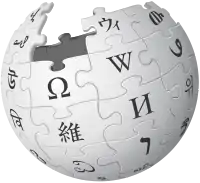obelus
English
WOTD – 5 November 2020
Alternative forms
- obolus
Etymology

Types of obeli (sense 1) that were used in ancient manuscripts and texts.

An obelus (sense 2) or dagger symbol.
From Middle English obelus, obelo,[1] from Old English obelus, from Late Latin obelus (“critical mark”), from Koine Greek ὀβελός (obelós, “critical mark”), Ancient Greek ὀβελός (obelós, “rod, spit; obelisk; critical mark”). The further etymology is uncertain;[2] a derivation from βέλος (bélos, “arrow, dart, missile”) (from Proto-Indo-European *gʷelH- (“to pierce; to reach; to throw; to hit by throwing”)) has been suggested, but the initial vowel remains unexplained.
The plural form obeli is derived from Late Latin obeli, from Ancient Greek ὀβελοί (obeloí).
Pronunciation
- Singular:
- (Received Pronunciation) IPA(key): /ˈɒbɪləs/, /ˈɒbləs/
Audio (RP) (file) - (General American) IPA(key): /ˈɑbələs/
- Plural (obeli):
- (Received Pronunciation) IPA(key): /ˈɒbɪlaɪ/
- (General American) IPA(key): /ˈɑbəˌlaɪ/
- Hyphenation: obe‧lus
Noun
obelus (plural obeluses or obeli) (typography)
- (historical) A symbol resembling a horizontal line (–), sometimes together with one or two dots (for example, ⨪ or ÷), which was used in ancient manuscripts and texts to mark a word or passage as doubtful or spurious, or redundant; an obelisk.
- 1707, “Palæographia Græca, […] i.e. The Ancient Greek Way of Writing, or a Treatise of the Origin and Progress of Greek Letters, and of the Several Sorts of Greek Writing in All Ages: […] By D. Bernard of Montfaucon, […] At Paris 1708. […]”, in The History of the Works of the Learned. Or, An Impartial Account of Books Lately Printed in All Parts of Europe. […] For the Month of September 1708. […], volume X, London: […] H. Rhodes, […]; A. Bell, […]; and D[aniel] Midwinter, […], OCLC 67563772, paragraph III, page 514:
- The ancienteſt of all is that of the Library of M. Colbert, which contains part of Exodus, Numbers, and Leviticus, of the Tranſlation of the Septuagint, with Lines call'd Obeli and Aſteriſks, as we find them in the Hexapla of Origen.
- 1722, David Martin, “Of the Obelus Plac’d in the Middle of the 7th Verse, […]”, in The Genuineness of the Text of the First Epistle of Saint John. Chap. v. Ꝟ. 7. […], London: […] W[illiam] and J[ohn] Innys […], OCLC 248170281, page 93:
- 'Tis pretended that the Divines of Louvain paſs'd the ſame judgment upon the miſplacing this obelus 150 years ago: but they have only ſaid that the Manuſcripts of [Robert] Stephens had the Text of the 7th Verſe entire, and ſo as 'tis printed, unleſs the obelus be placed wrong: I would my ſelf ſay as much, tho' I maintain that it is in its true place.
- 1785, George Travis, “Letter I.”, in Letters to Edward Gibbon, Esq. […], 2nd edition, London: […] C[harles] F[rancis] and J[ohn] Rivington, […], OCLC 181802684, pages 5–6:
- In A.D. 1550, Robert Stephens gave a third edition to the world, on a larger ſcale: in which he diſtinguiſhed the different Greek MSS, which he had collated, by Greek letters (β, γ, &c.) and the various readings by an obelus, and ſemi-parentheſis, or crotchet; which, wherever inſerted, were meant to denote, that, from the word, before which the obelus was placed, to the ſtation where the ſemi-parentheſis was found, in the Greek text, the whole of that verſe, or verſes, word, or words, was wanting in the particular MSS cited in the margin.
- 1797, Charles Butler, chapter XIV, in Horæ Biblicæ, [London: s.n.], OCLC 225334358, paragraph 2, page 97:
- He, therefore, publiſhed another edition. In this he made few alterations in the text itſelf, but ſhewed by obeluſes and aſteriſks, where it differed from the Septuagint, or the Hebrew.
- 1801 May, “Art. X. Quatuor Evangelia Græce. Textum receptum, signis distinctum ad instar Origenianæ ΤΩΝ Ό. recensionis edivit J. White, S.T.P. Ling. Arab. Prof.—Syriacæ Philoxenianæ Novi Testamenti Versionis Interpres. 8vo. pp. 335. Printed at Oxford. [book review]”, in The Monthly Review; or, Literary Journal, Enlarged, volume XXXV, London: […] A[ndrew] Strahan, […], and R[alph] Griffiths; and sold by T[homas] Becket, […], OCLC 901376714, page 66:
- Dr. W[hite] has here given those readings which, according to the opinion of [Johann Jakob] Griesbach, ought to make a part of the text; he has rejected, or at least stigmatized with the obelus, those which, on the evidence of the most antient MSS. and versions, are not intitled to admission; [...]
- 1853, Samuel Davidson, “The Philoxenian Version”, in A Treatise of Biblical Criticism Exhibiting a Systematic View of that Science, volume II (The New Testament), Boston, Mass.: Gould and Lincoln […], OCLC 778733, page 189:
- The text of the Philoxenian as revised by Thomas [of Harqel] is furnished with obeli and asterisks. Most of the MSS. too have critical remarks and readings in the margin.
- 1890, S[amuel] R[olles] Driver, “Introduction”, in Notes on the Hebrew Text of the Books of Samuel: […], Oxford, Oxfordshire: Clarendon Press, § 2 (Early Hebrew Orthography), paragraph 4, page xlv:
- In the Septuagint column, additions, to which nothing corresponded in the Hebrew, were marked by an obelus prefixed (÷ … ⸔); omissions, where words standing in the Hebrew were not represented in the Greek, were filled in by him, usually from Theodotion, and noted similarly by an asterisk (※ … ⸔). [Footnote 1: The sign ⸔ indicates the close of the words to which the obelus or asterisk refers.]
- 1931, A[lec] E[li] Silverstone, “Onkelos and Peshitta”, in Aquila and Onkelos (Publications of the University of Manchester; no. I; Semitic Languages Series; no. CCXIV), Manchester: Manchester University Press, OCLC 1058793, page 123:
- The critical marks introduced by Origen were retained in the Syro-Hexapla, so that every page contained asterisks and obeli: [...]
- 2011, Timothy Michael Law, “Hexaplaric Material outside of Syh”, in Anneli Aejmelaeus, Kristin De Troyer, Wolfgang Kraus, and Emanuel Tov, editors, Origenes Orientalis: The Preservation of Origen’s Hexapla in the Syrohexapla of 3 Kingdoms (De Septuaginta Investigationes; 2), Göttingen, Lower Saxony: Vandenhoeck & Ruprecht, →ISBN, page 317:
- Moreover, owing to a deficient understanding of the characteristics of the individual manuscripts, I have not included in this analysis those readings that are lacking in MT [Masoretic Text] but are in Syh [the Syro-Hexapla] without an obelus. [...] In all probability, the obeli were more readily discarded than the asterisks given that the attitudes towards the text made deletion somewhat taboo: unlike the asterisked portions, the obelised readings had already been part of the Church's text.
-
- A dagger symbol (†), which is used in printed matter as a reference mark to refer the reader to a footnote, marginal note, etc.; beside a person's name to indicate that the person is deceased; or beside a date to indicate that it is a person's death date; an obelisk.
- 1862, Thomas De Quincey, “Homer and the Homeridæ”, in Dr Samuel Parr or Whiggism in Its Relations to Literature and Other Writings (De Quincey’s Works; V), Edinburgh: Adam and Charles Black, OCLC 643603167, page 313:
- And, with respect to the Homer of Aristarchus, it is to be considered, that besides the lines, sentences, and long passages, to which that Herod of critics affixed his obelus (†) or stiletto, there were entire books which he found no use on obelising piecemeal; because it was not this line or that line into which he wished to thrust his dagger, but the whole rabble of lines—"tag, rag, and bobtail."
- 1998, Robin Waterfield, “Translator’s Note”, in Herodotus; Robin Waterfield, transl., The Histories: A New Translation (Oxford World’s Classics), Oxford, Oxfordshire: Oxford University Press, published 2008, →ISBN, page xlii:
- I have translated the Oxford Classical Text of C[harles] Hude (3rd edn., Oxford, 1927), except at the places marked in the translation with an obelus (†), which refer the interested reader to a note in the Textual Notes.
- 2009, Peter Mahon, “The Language(s) and Structure(s) of Finnegans Wake”, in Joyce: A Guide for the Perplexed, London; New York, N.Y.: Continuum International Publishing Group, →ISBN, page 167:
- The obeli (†) bring the letter into alignment with the Irish ninth century illuminated gospel manuscript, the Book of Kells on the recto of folio 219, there are four red obeli that run down the middle of the page between the lines, and others around the margins. As such, these obeli thus correspond to the 'cardinal' and 'doubtful points' [...] also found in the letter.
- 2013, Livy, “Appendix 1: List of Variations from the Oxford Classical Text of Walters and Conway”, in J. C. Yardley, transl., Rome’s Italian Wars: Books Six to Ten (Oxford’s World Classics), Oxford, Oxfordshire: Oxford University Press, →ISBN, page 288:
- Note: Square brackets […] indicate editorial excisions from the text, and angled brackets <…> editorial additions, while obeli † show that the text is unsound and that the translation gives only an opinion of what Livy might have been saying at that point.
-
Usage notes
- Obelus was used in Middle English, but thereafter was displaced by obelisk until the 19th century when both words began to be used with equal regularity.[2]
- An obelus with two dots above and below the line (÷) is now often used in mathematical equations to represent division.
Derived terms
- double obelus (rare)
- obelic
- obelised, obelized (adjective)
Related terms
- obelisk
- obelism (obsolete, rare)
- obelise, obelize
Translations
symbol used in ancient manuscripts and texts to mark a word or passage as doubtful or spurious, or redundant
|
dagger symbol — see dagger
See also
- double dagger
References
- “obelus, n.”, in MED Online, Ann Arbor, Mich.: University of Michigan, 2007.
- “obelus, n.”, in OED Online
 , Oxford, Oxfordshire: Oxford University Press, March 2004; “obelus, n.”, in Lexico, Dictionary.com; Oxford University Press, 2019–2022.
, Oxford, Oxfordshire: Oxford University Press, March 2004; “obelus, n.”, in Lexico, Dictionary.com; Oxford University Press, 2019–2022.
Further reading
 obelus on Wikipedia.Wikipedia
obelus on Wikipedia.Wikipedia
Anagrams
- Belous, Lobues, besoul, blouse, boules